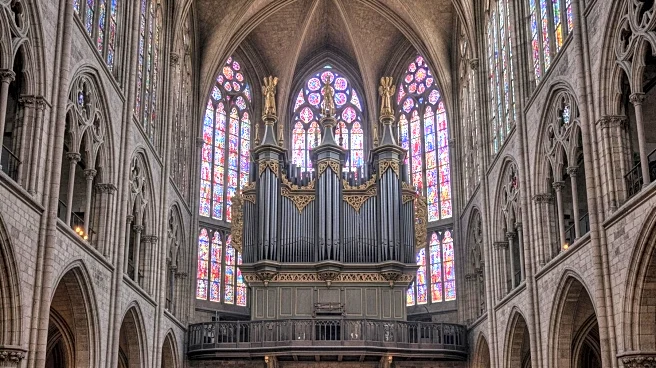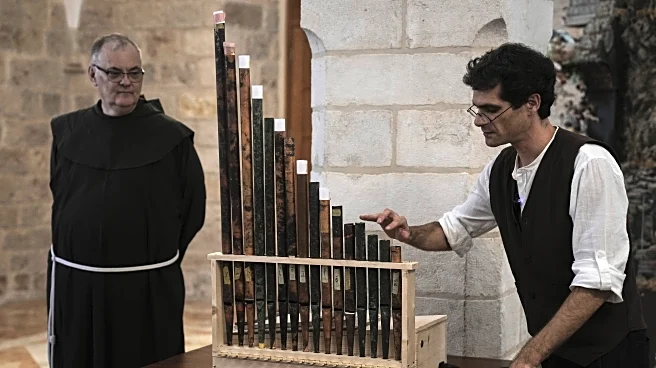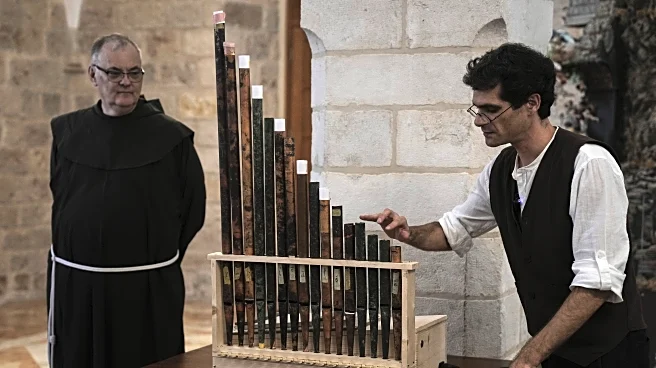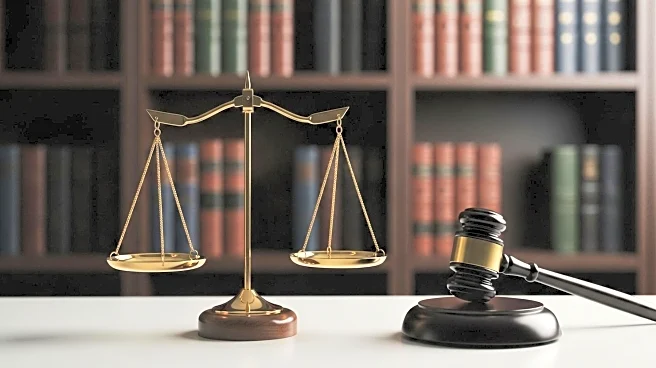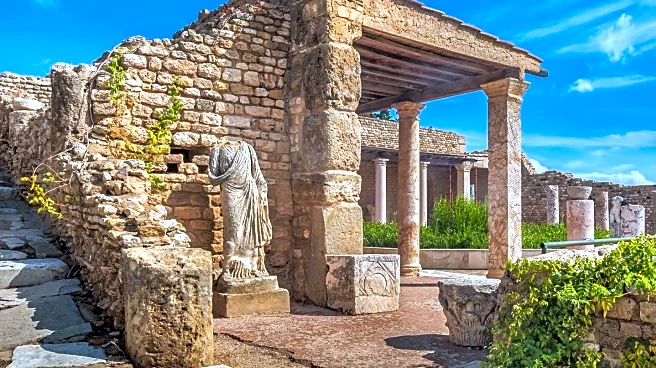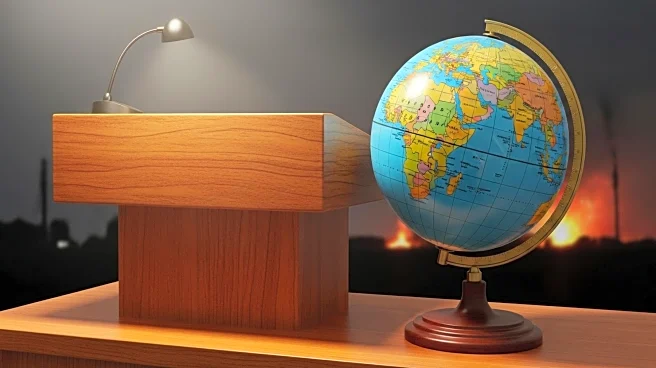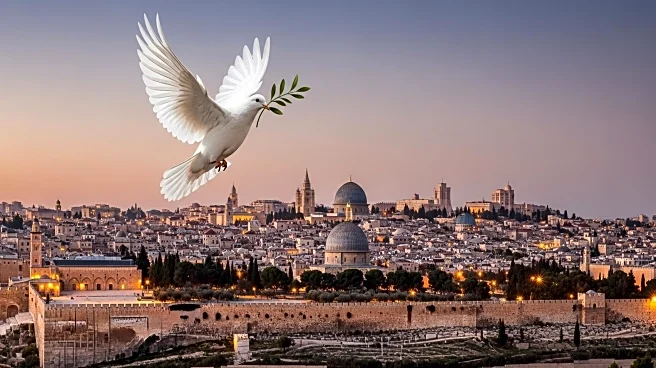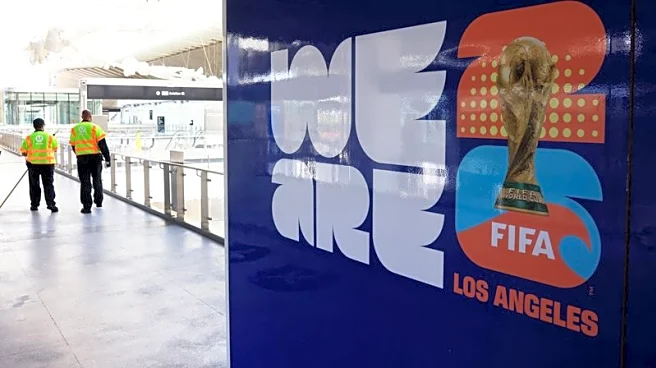What's Happening?
A medieval organ, buried for centuries near the Church of the Nativity in Bethlehem, has been restored and is now playing once again in Jerusalem. The organ, dating back to the 11th century, was discovered in 1906 and has been meticulously reconstructed by researchers, including Spanish researcher David Catalunya. The instrument, housed in the Monastery of Saint Saviour, is set to be displayed in a museum of the Franciscan Custody of the Holy Land. The organ's restoration offers a rare opportunity to hear the original sounds that Crusaders once heard, providing a unique window into the past.
Why It's Important?
The revival of the medieval organ is significant for historical and cultural preservation, offering insights into the musical practices of the 11th century. It highlights the advanced craftsmanship and musical heritage of the time, potentially sparking renewed interest in medieval musicology. The project underscores the importance of archaeological discoveries in understanding historical contexts and preserving cultural artifacts. The organ's restoration may inspire further research and exploration of ancient musical instruments, contributing to the broader field of historical music studies.
What's Next?
The organ will be displayed in a museum, allowing the public to experience its historical sound. Researchers may continue to study the organ's construction and sound, potentially leading to further discoveries about medieval music. The project may encourage similar restoration efforts for other historical instruments, fostering a deeper appreciation for cultural heritage. The organ's presence in Jerusalem may also attract tourists and scholars interested in historical music and archaeology.
Beyond the Headlines
The restoration of the organ raises questions about the preservation of cultural heritage and the ethical considerations of restoring ancient artifacts. It highlights the role of interdisciplinary collaboration in historical research, involving archaeologists, musicologists, and historians. The project may influence future policies on cultural preservation and the allocation of resources for similar endeavors. The organ's revival also serves as a reminder of the enduring impact of historical events, such as the Crusades, on contemporary cultural practices.
